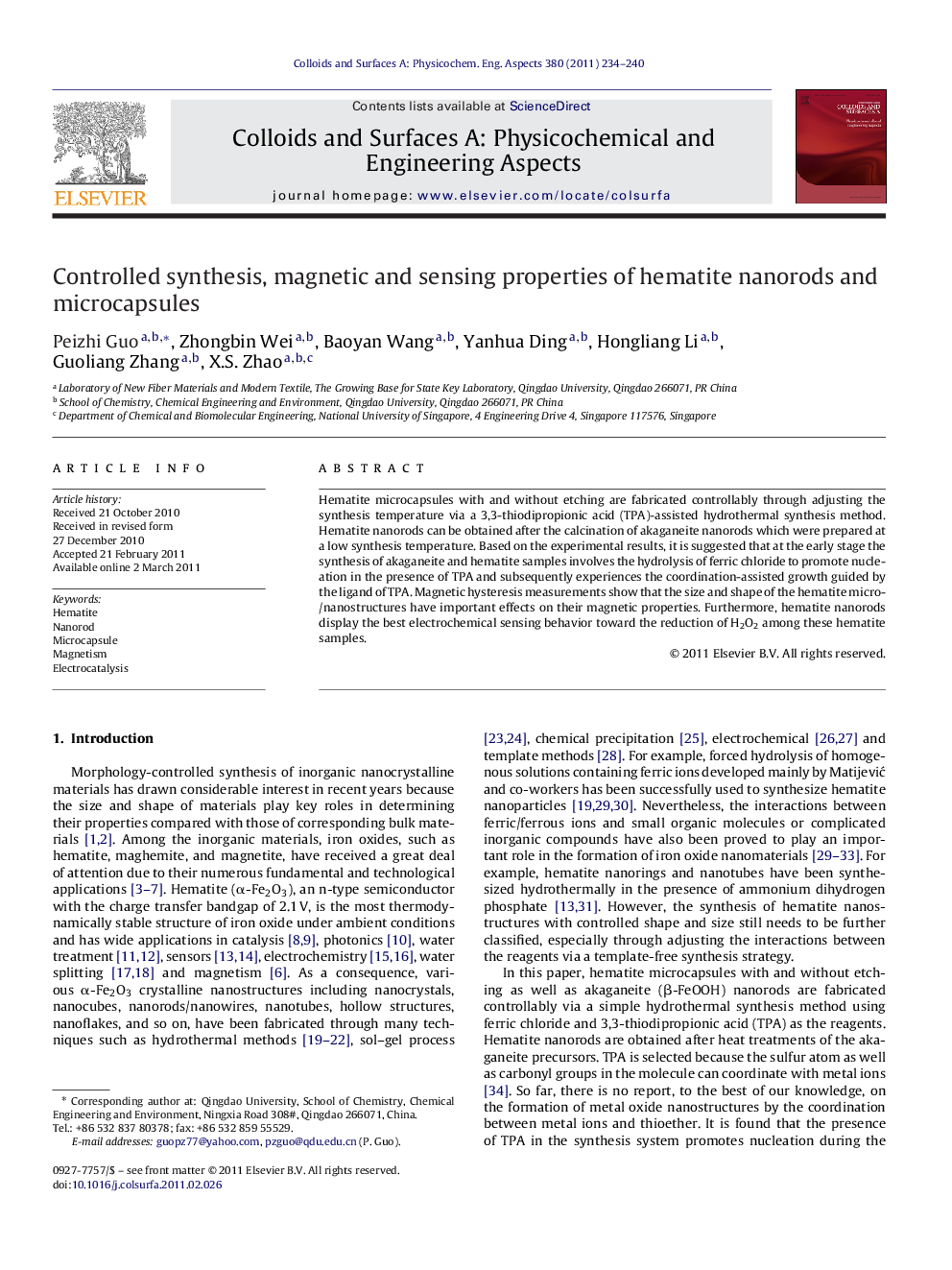| Article ID | Journal | Published Year | Pages | File Type |
|---|---|---|---|---|
| 594776 | Colloids and Surfaces A: Physicochemical and Engineering Aspects | 2011 | 7 Pages |
Hematite microcapsules with and without etching are fabricated controllably through adjusting the synthesis temperature via a 3,3-thiodipropionic acid (TPA)-assisted hydrothermal synthesis method. Hematite nanorods can be obtained after the calcination of akaganeite nanorods which were prepared at a low synthesis temperature. Based on the experimental results, it is suggested that at the early stage the synthesis of akaganeite and hematite samples involves the hydrolysis of ferric chloride to promote nucleation in the presence of TPA and subsequently experiences the coordination-assisted growth guided by the ligand of TPA. Magnetic hysteresis measurements show that the size and shape of the hematite micro-/nanostructures have important effects on their magnetic properties. Furthermore, hematite nanorods display the best electrochemical sensing behavior toward the reduction of H2O2 among these hematite samples.
Graphical abstractFigure optionsDownload full-size imageDownload as PowerPoint slideHighlights► Akaganeite nanorods with open pore channels are synthesized. ► Hematite microcapsules are synthesized by the coordination-assisted growth strategy. ► Electrocatalysis of H2O2 depends on the microstructures of hematite micro-/nanostructures.
